A Triaxial Applicator for the Measurement of the Electromagnetic Properties of Materials
Abstract
:1. Introduction
2. Probe Geometry
3. Theoretical Model and Extraction Procedure
4. Calibration Procedure
4.1. Analysis as Cascaded Two-Port Networks
4.2. Measurement of Transition Network S-Parameters
4.3. De-Embedding the Material Network S-Parameters
4.4. The Three-Short Method
4.5. Example of Calibration
5. Design and Fabrication of a Prototype Triaxial Probe System
6. Measured Results
7. Discussion
Acknowledgments
Author Contributions
Conflicts of Interest
Abbreviations
| GR | General Radio |
| HFSS | High-Frequency Structure Simulator |
| MagRAM | Magnetic radar absorbing material |
| MFIE | Magnetic-field integral equation |
| TEM | Transverse electromagnetic |
| TM | Transverse magnetic |
| VNA | Vector network analyzer |
References
- Vinoy, K.J.; Jha, R.M. Radar Absorbing Materials: From Theory to Design and Characterization; Kluwer Academic: Boston, MA, USA, 1996; ISBN 978-1461380658. [Google Scholar]
- Feng, Y.B.; Qiu, T.; Shen, C.Y. Absorbing properties and structural design of microwave absorbers based on carbonyl iron and barium ferrite. J. Magn. Magn. Mater. 2007, 318, 8–13. [Google Scholar] [CrossRef]
- Chen, L.F.; Ong, C.K.; Neo, C.P.; Varadan, V.V.; Varadan, V.K. Microwave Electronics: Measurement and Materials Characterization; Wiley: London, UK, 2004; ISBN 978-0470844922. [Google Scholar]
- Nicolson, A.M.; Ross, G.F. Measurement of the intrinsic properties of materials by time-domain techniques. IEEE Trans. Instrum. Meas. 1970, 4, 377–382. [Google Scholar] [CrossRef]
- Weir, W.B. Automatic measurement of complex dielectric constant and permeability at microwave frequencies. Proc. IEEE 1974, 62, 33–36. [Google Scholar] [CrossRef]
- Baker-Jarvis, J.; Janezic, M.D.; Gosvenor, J.H.; Geyer, R.G. Transmission/Reflection and Short-Circuit Line Methods for Measuring Permittivity and Permeability; NIST Tech. Note 1355; U.S. Department of Commerce: Washington, DC, USA, 1992. [CrossRef]
- Bary, W. A broadband, automated stripline technique for the simultaneous measurement of complex permittivity and permeability. IEEE Trans. Microw. Theory Tech. 1986, 34, 80–84. [Google Scholar] [CrossRef]
- Dorey, S.P.; Havrilla, M.J.; Frasch, L.L.; Choi, C.; Rothwell, E.J. Stepped-waveguide material-characterization technique. IEEE Antennas Propag. Mag. 2004, 46, 170–175. [Google Scholar] [CrossRef]
- Bogle, A.; Havrilla, M.; Nyquist, D.; Kempel, L.; Rothwell, E. Electromagnetic material characterization using a partially-filled rectangular waveguide. J. Electromagn. Waves Appl. 2005, 19, 1291–1306. [Google Scholar] [CrossRef]
- ASTM D7449/D7449M-14. Standard Test Method for Measuring Relative Complex Permittivity and Relative Magnetic Permeability of Solid Materials at Microwave Frequencies Using Coaxial Air Line; ASTM International: West Conshohocken, PA, USA, 2014. [CrossRef]
- Rothwell, E.J.; Temme, A.; Frasch, L.L. Characterisation of properties of conductor-backed MagRAM layer using reflection measurement. Electron. Lett. 2012, 48, 1131–1133. [Google Scholar] [CrossRef]
- Fenner, R.A.; Rothwell, E.J.; Frasch, L.L. A comprehensive analysis of free-space and guided-wave techniques for extracting the permeability and permittivity of materials using reflection-only measurements. Radio Sci. 2012, 47, 1004–1016. [Google Scholar] [CrossRef]
- Kalachev, A.A.; Matitsin, S.M.; Novogrudskiy, L.N.; Rozanov, K.N.; Sarychev, A.K.; Seleznev, A.V.; Kukolev, I.V. The Methods of Investigation of Complex Dielectric Permittivity of Layer Polymers Containing Conductive Inclusions. In Optical and Electrical Properties of Polymers, Materials Research Society Symposia Proceedings; Emerson, J.A., Torkelson, J.M., Eds.; Materials Research Society: Pittsburgh, PA, USA, 1991; Volume 214, pp. 119–124. ISBN 9781558991064. [Google Scholar]
- Baker-Jarvis, J.; Vanzura, E.J.; Kissick, W.A. Improved technique for determining complex permittivity with the transmission/reflection method. IEEE Trans. Microw. Theory Tech. 1990, 38, 1096–1103. [Google Scholar] [CrossRef]
- Tantot, O.; Chatard-Moulin, M.; Guillon, P. Measurement of complex permittivity and permeability and thickness of multilayered medium by an open-ended waveguide method. IEEE Trans. Instrum. Meas. 1997, 46, 519–522. [Google Scholar] [CrossRef]
- Li, C.-L.; Chen, K.-M. Determination of electromagnetic properties of materials using flanged open-ended coaxial probe—Full-wave analysis. IEEE Trans. Instrum. Meas. 1995, 44, 19–27. [Google Scholar] [CrossRef]
- Dester, G.D.; Rothwell, E.J.; Havrilla, M.J. Two-iris method for the electromagnetic characterization of conductor-backed absorbing materials using an open-ended waveguide probe. IEEE Trans. Instrum. Meas. 2012, 61, 1037–1044. [Google Scholar] [CrossRef]
- Maode, N.; Yong, S.; Jinkui, Y.; Chenpeng, F.; Deming, X. An improved open-ended waveguide measurement technique on parameters ϵr and μr of high-loss materials. IEEE Trans. Instrum. Meas. 1998, 47, 476–481. [Google Scholar] [CrossRef]
- Havrilla, M.; Bogle, A.; Hyde, M.; Rothwell, E. EM material characterization of conductor backed media using a NDE microstrip probe. In Studies in Applied Electromagnetics and Mechanics: Electromagnetic Nondestructive Evaluation (XVI); IOS Press: Amsterdam, The Netherlands, 2014; Volume 38, pp. 210–218. [Google Scholar] [CrossRef]
- Hyde, M.; Stewart, J.; Havrilla, M.; Baker, W.; Rothwell, E.; Nyquist, D. Nondestructive electromagnetic material characterization using a dual waveguide probe: A full wave solution. Radio Sci. 2009, 44, 1–13. [Google Scholar] [CrossRef]
- Seal, M.D.; Hyde, M.W., IV; Havrilla, M.J. Nondestructive complex permittivity and permeability extraction using a two-layer dual-waveguide probe measurement geometry. Prog. Electromagn. Res. 2012, 123, 123–142. [Google Scholar] [CrossRef]
- Crowgey, B.; Akinlabi-Oladimeji, K.; Rothwell, E.; Havrilla, M.; Frasch, L. A triaxial applicator for the characterization of conductor-backed absorbing materials. In Proceedings of the 35th Annual Meeting & Symposium of the Antenna Measurement Techniques Association (AMTA), Columbus, OH, USA, 6–11 October 2013. [Google Scholar]
- Hyde, M.; Havrilla, M.; Bogle, A. A novel and simple technique for measuring low-loss materials using the two flanged waveguides measurement geometry. Meas. Sci. Technol. 2011, 22, 085704. [Google Scholar] [CrossRef]
- Grimm, J.M.; Nyquist, D.P.; Thorland, M.; Infante, D. Broadband material characterization using microstrip/stripline field applicator. In Proceedings of the Digest of the IEEE Antennas Propagation Society International Symposium, Chicago, IL, USA, 18–25 June 1992; pp. 1202–1205. [Google Scholar] [CrossRef]
- Kurokawa, K. Power waves and the scattering matrix. IEEE Trans. Microw. Theory Tech. 1965, 13, 194–202. [Google Scholar] [CrossRef]
- Dester, G.D.; Rothwell, E.J.; Havrilla, M.J. An extrapolation method for improving waveguide probe material characterization accuracy. IEEE Microw. Wirel. Compon. Lett. 2010, 20, 298–300. [Google Scholar] [CrossRef]
- Stetson, L.E.; Nelson, S.O. A method for determining dielectric properties of grain and seed in the 200- to 500-MHz range. Trans. ASAE 1970, 13, 491–495. [Google Scholar] [CrossRef]
- Mohsenin, N.N. Electromagnetic Radiation Properties of Foods and Agricultural Products; Gordon and Breach: New York, NY, USA, 1984; p. 441. ISBN 0677061900. [Google Scholar]
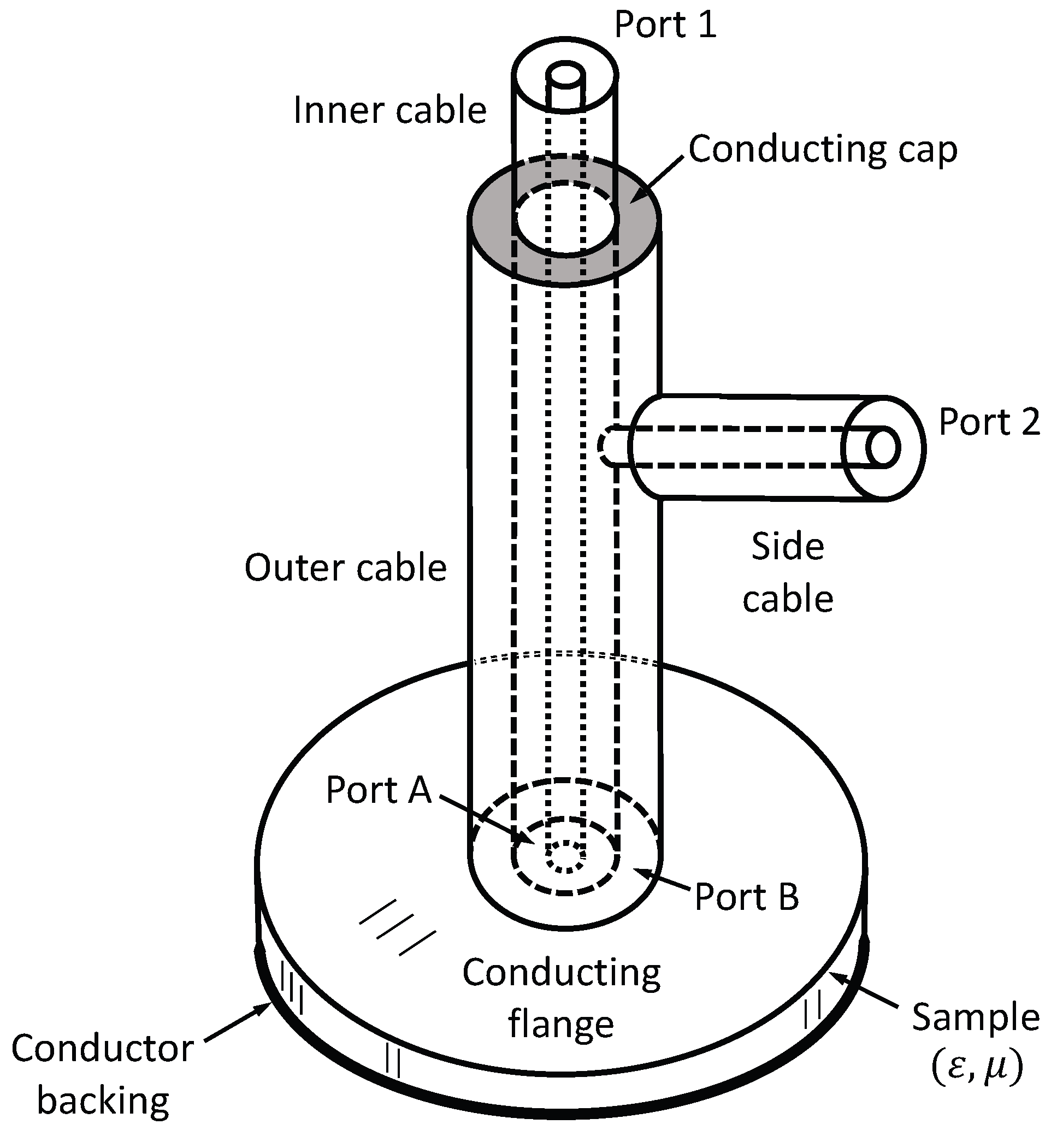




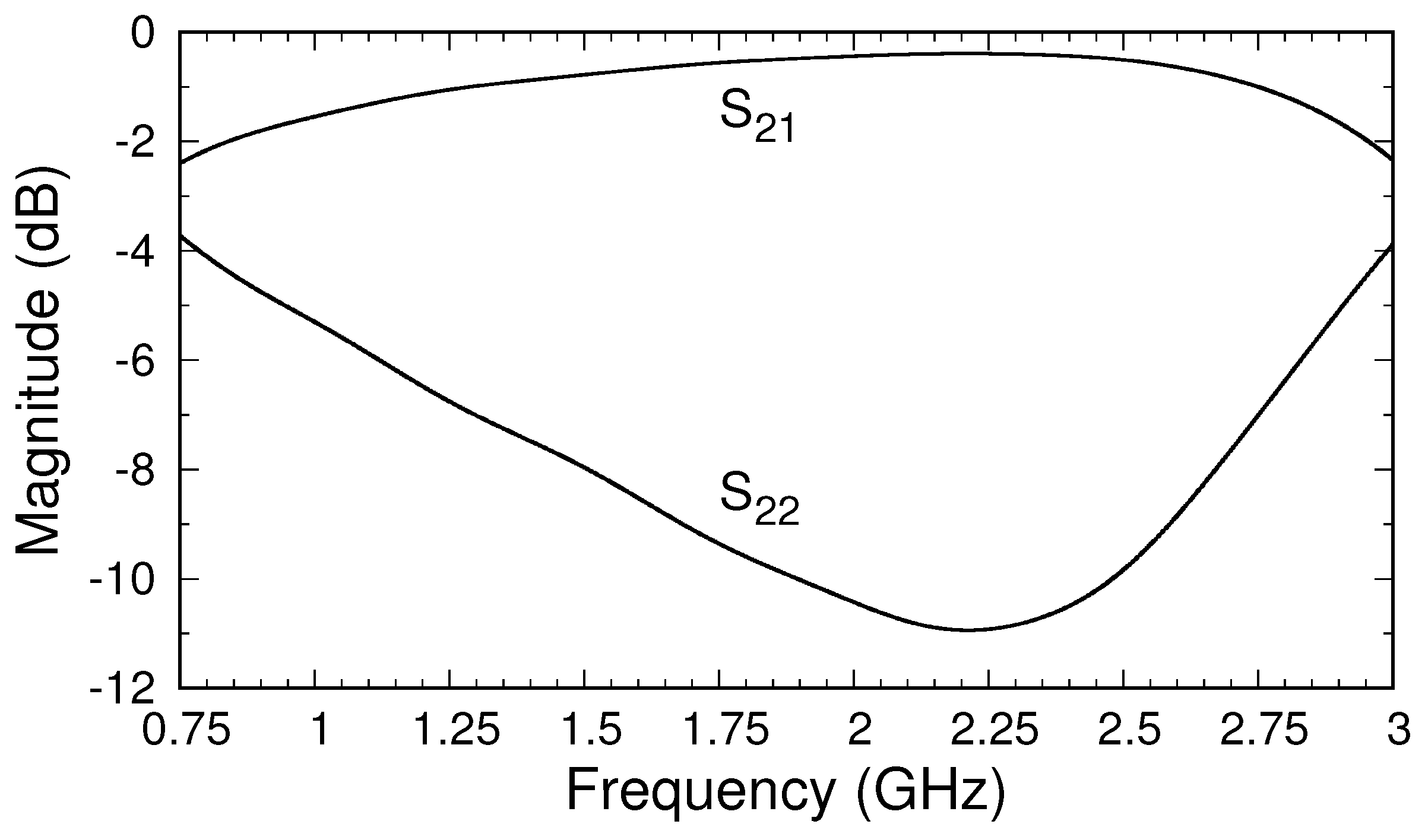
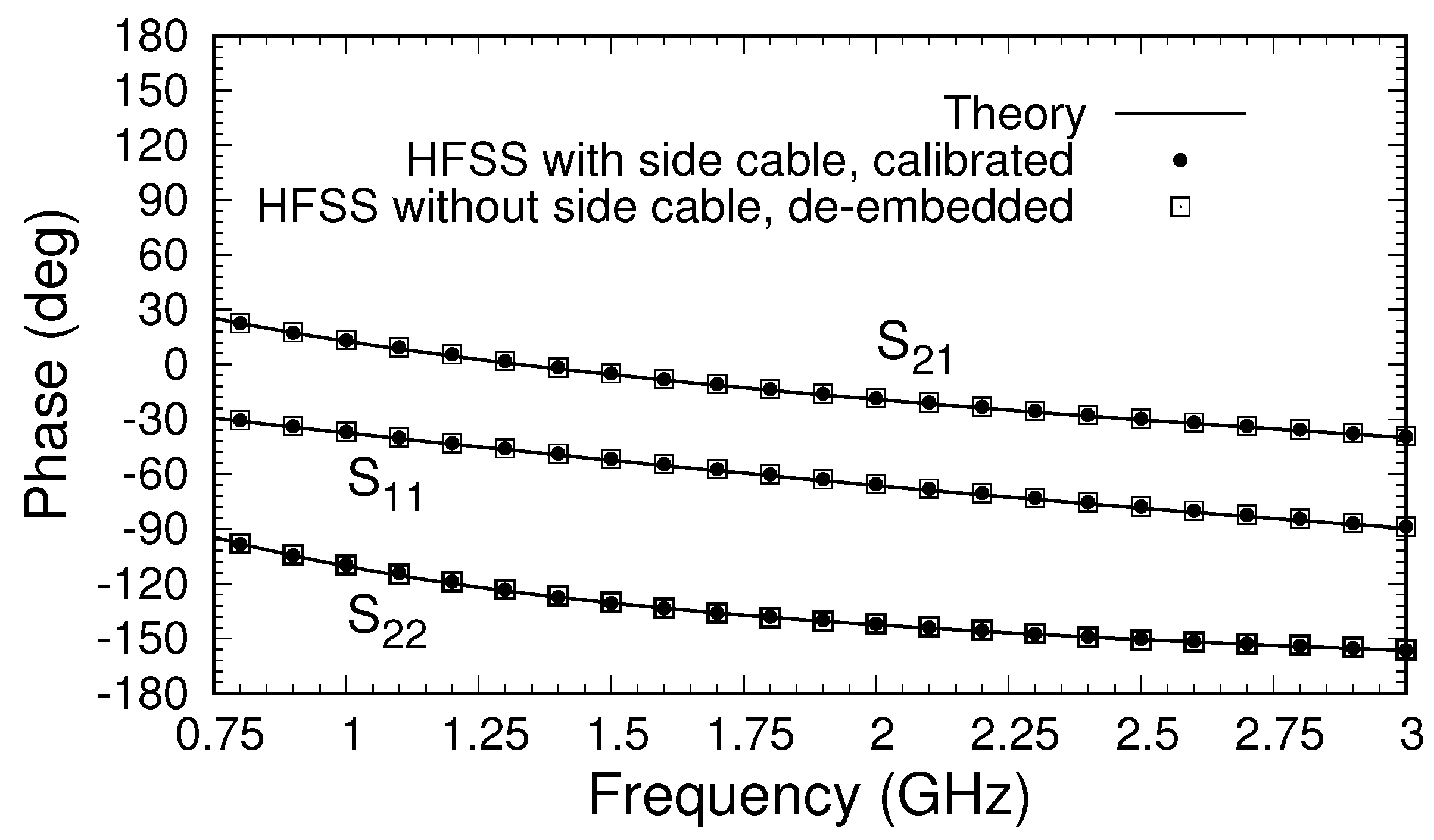
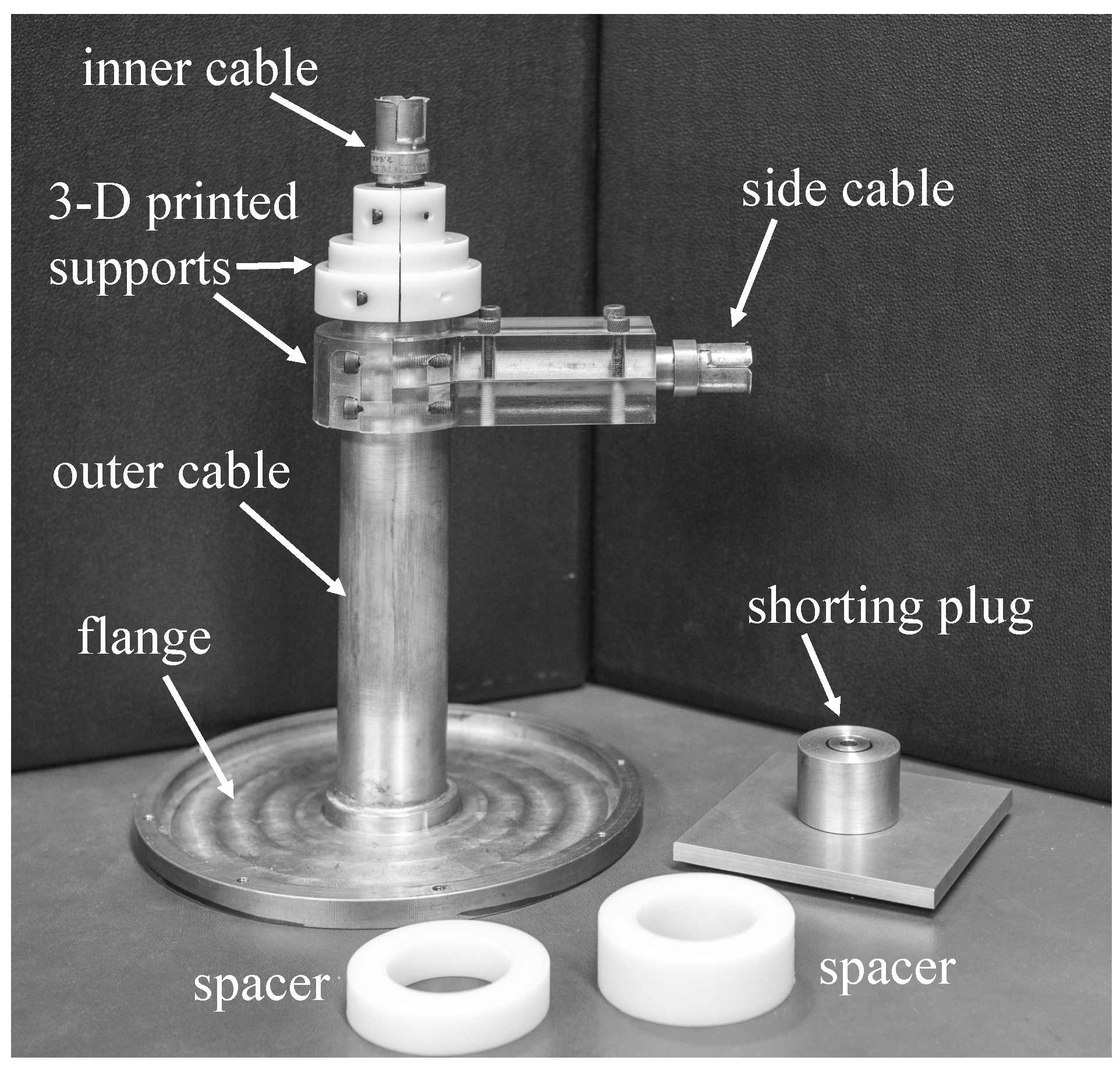
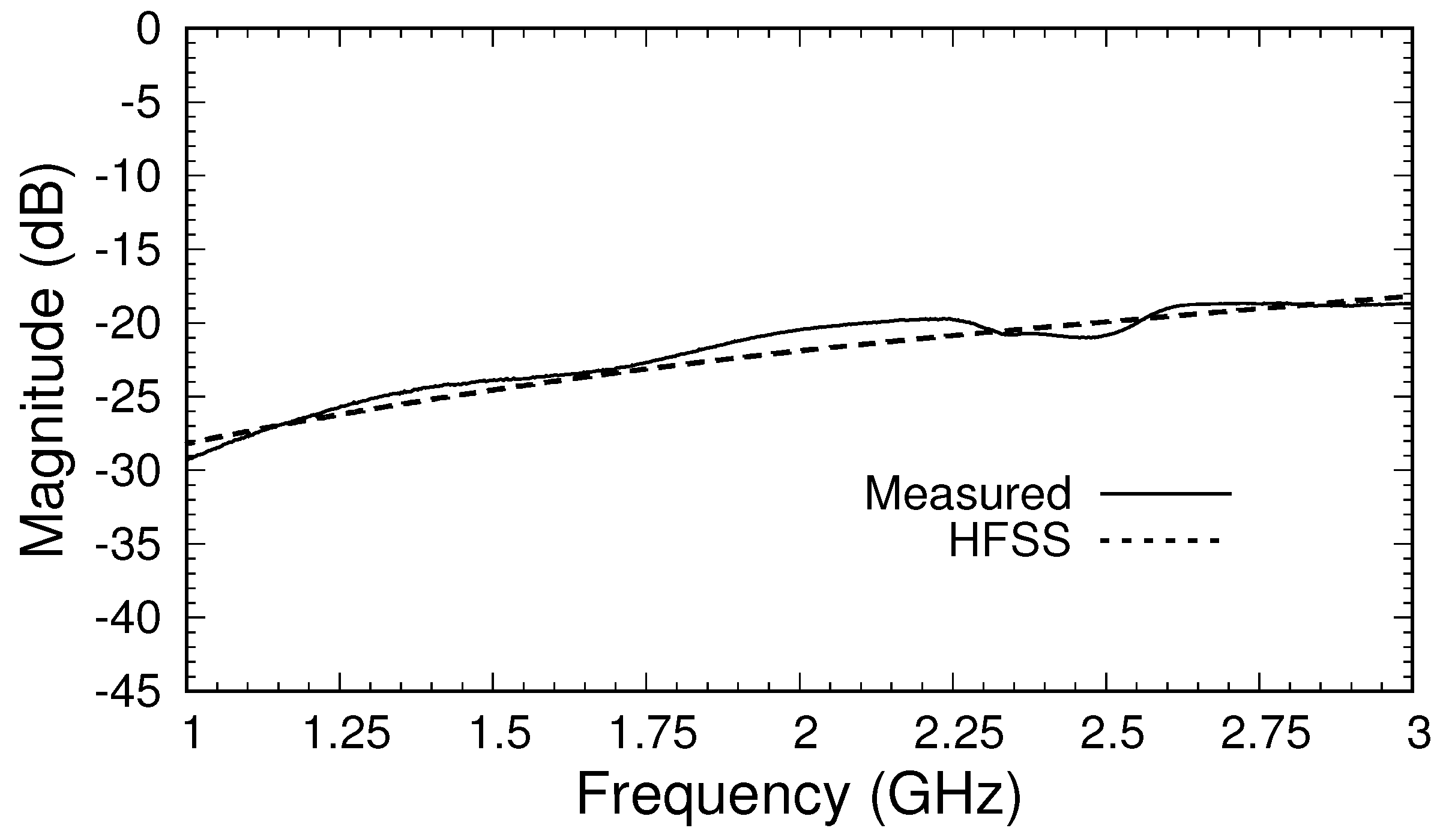
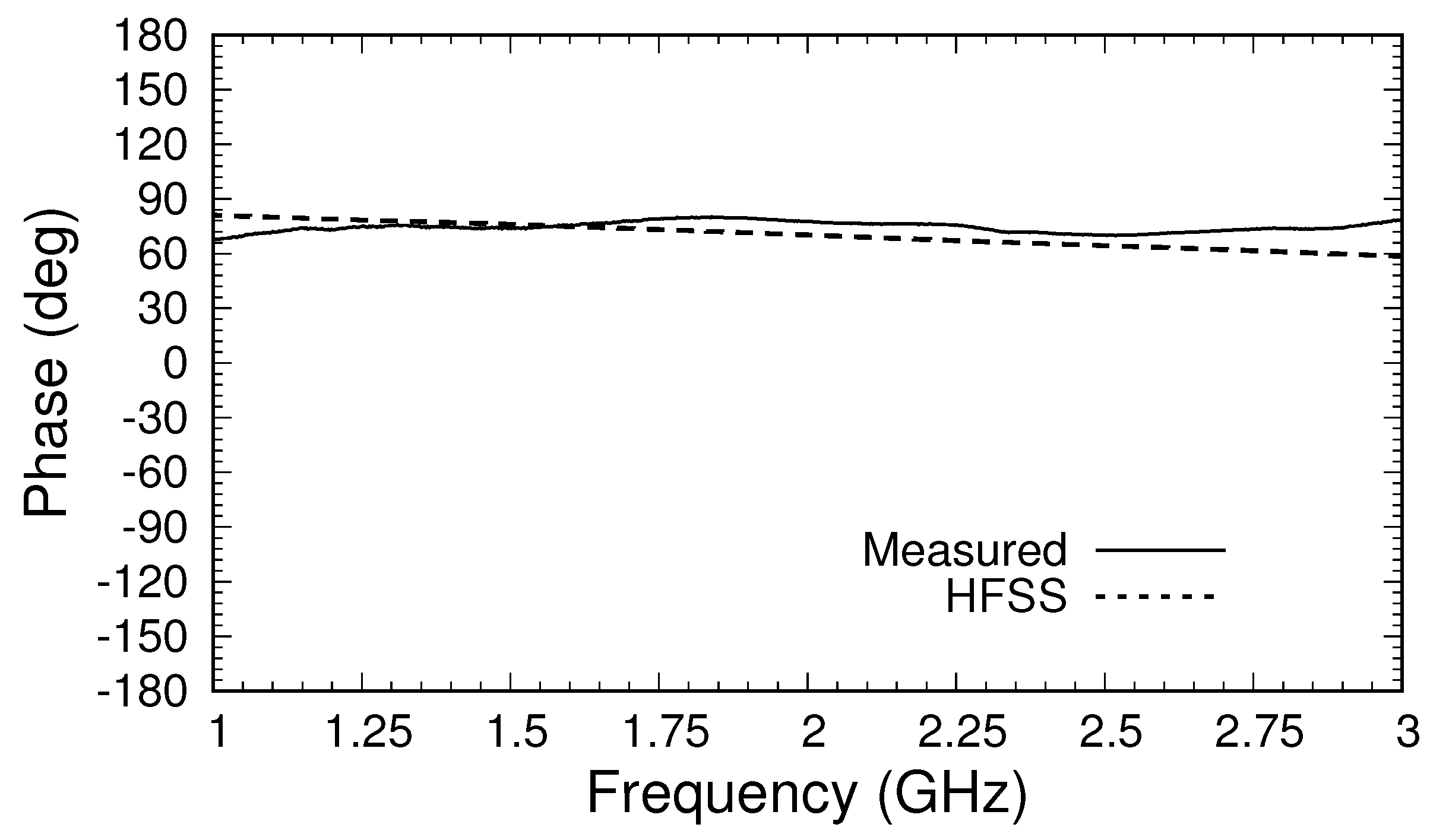
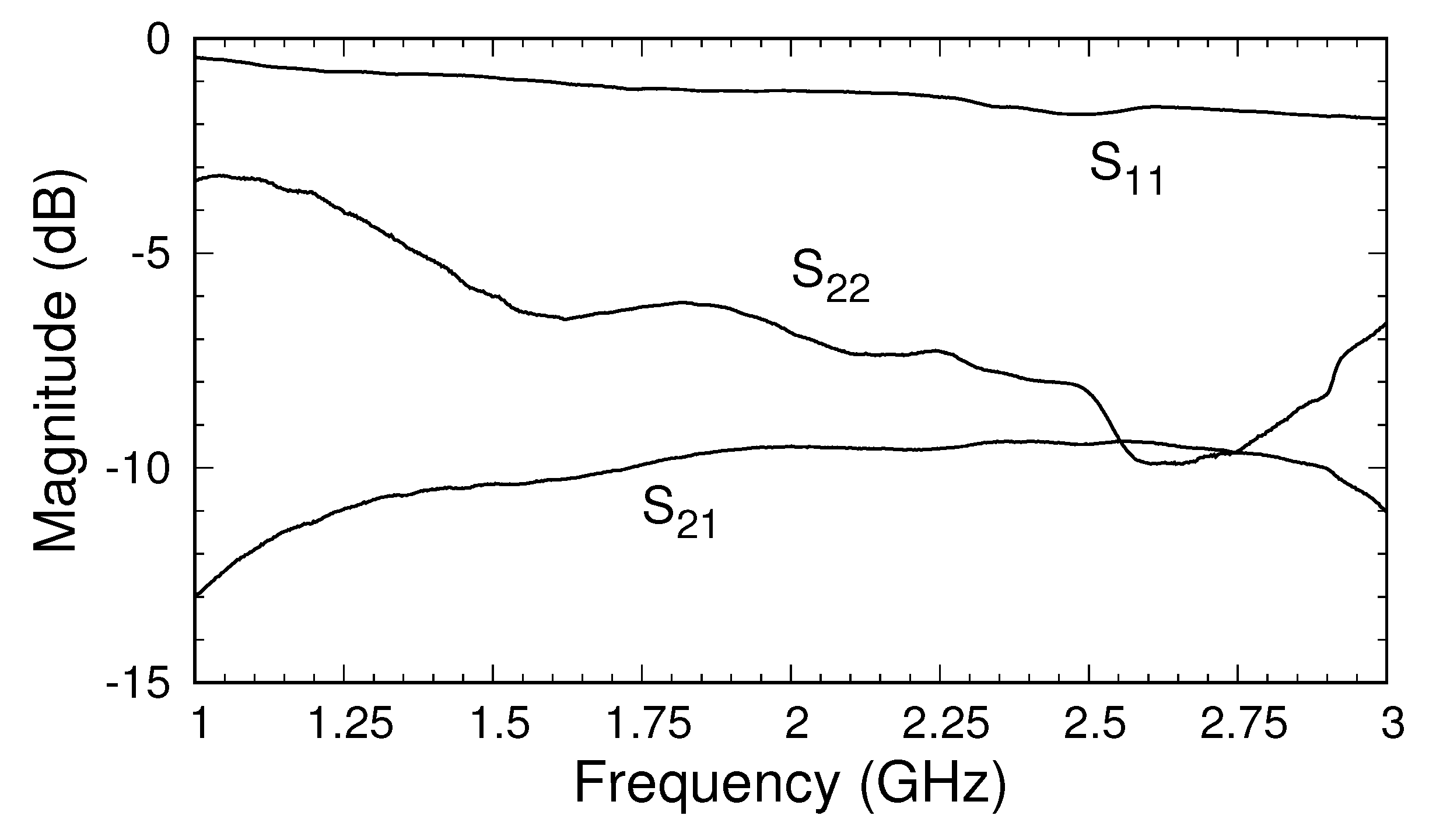
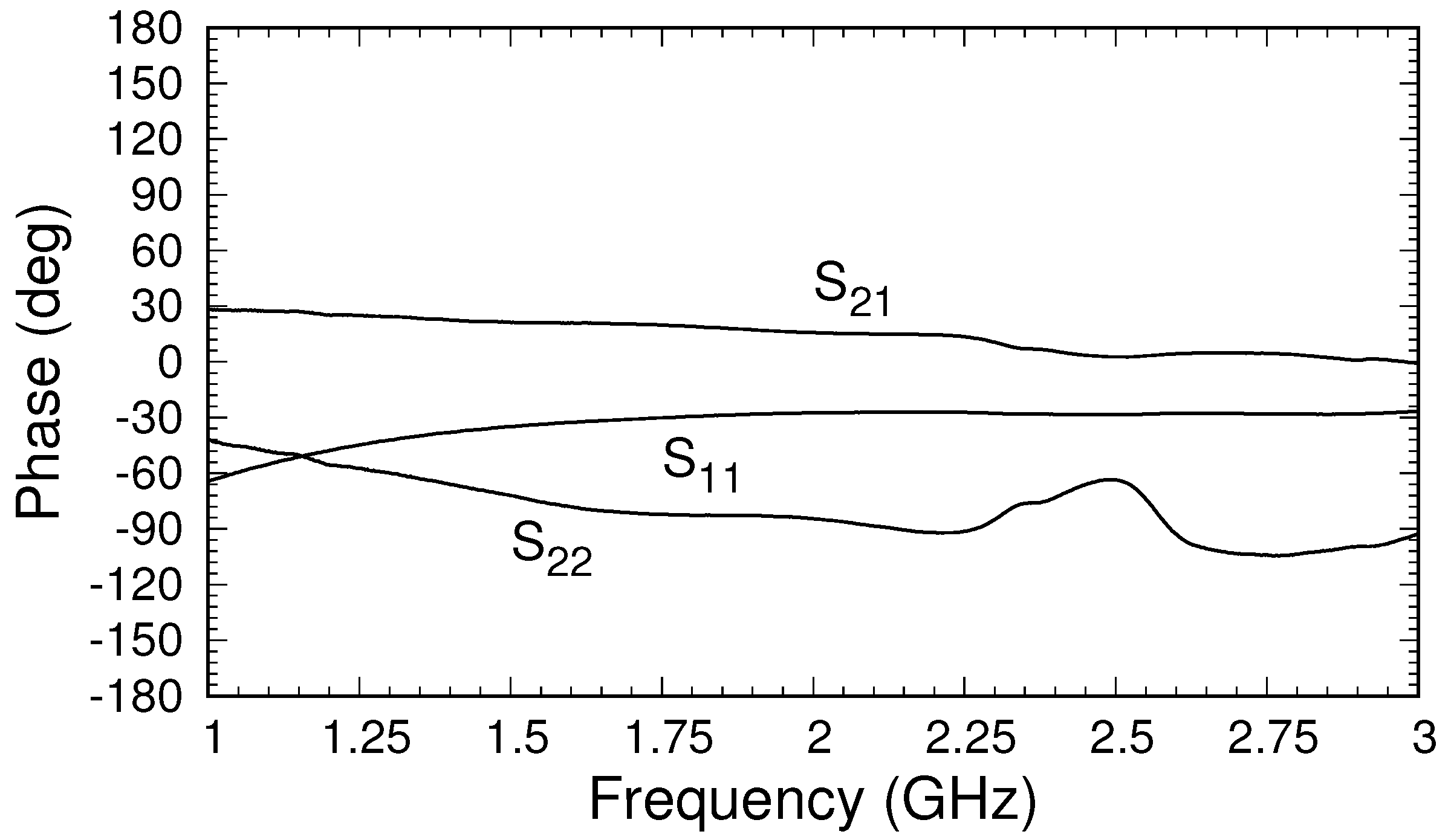
© 2018 by the authors. Licensee MDPI, Basel, Switzerland. This article is an open access article distributed under the terms and conditions of the Creative Commons Attribution (CC BY) license (http://creativecommons.org/licenses/by/4.0/).
Share and Cite
Karuppuswami, S.; Rothwell, E.; Chahal, P.; Havrilla, M. A Triaxial Applicator for the Measurement of the Electromagnetic Properties of Materials. Sensors 2018, 18, 383. https://doi.org/10.3390/s18020383
Karuppuswami S, Rothwell E, Chahal P, Havrilla M. A Triaxial Applicator for the Measurement of the Electromagnetic Properties of Materials. Sensors. 2018; 18(2):383. https://doi.org/10.3390/s18020383
Chicago/Turabian StyleKaruppuswami, Saranraj, Edward Rothwell, Premjeet Chahal, and Michael Havrilla. 2018. "A Triaxial Applicator for the Measurement of the Electromagnetic Properties of Materials" Sensors 18, no. 2: 383. https://doi.org/10.3390/s18020383




